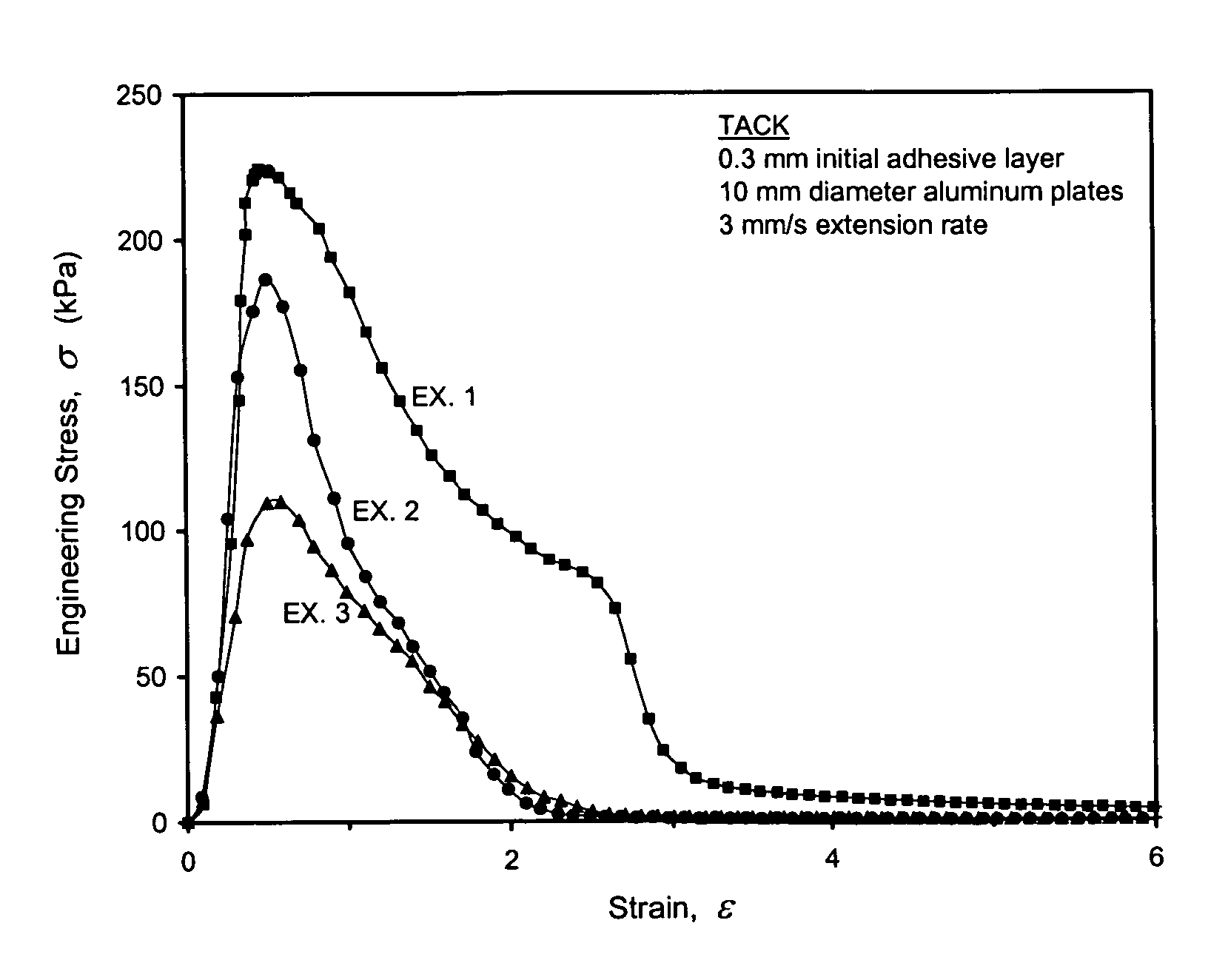Multi-functionalized high-trans elastomeric polymers
a polymer and polymer technology, applied in the field of multi-functional elastomeric polymers, can solve the problems of insufficient gel fraction, insufficient curability, difficult control of cross-linking density, etc., and achieve narrow molecular weight distribution
- Summary
- Abstract
- Description
- Claims
- Application Information
AI Technical Summary
Benefits of technology
Problems solved by technology
Method used
Image
Examples
example 1
[0134] A solution of 25 mL (24.7 g, 0.15 mol) allyl trimethoxysilane in 100 mL dry, distilled methylene chloride was prepared in an oven-dried 200 mL Schlenk flask fitted with a condenser. A solution of 0.79 g (9.3×10−4 mol) Grubbs 2nd generation ruthenium catalyst in 10 mL dry toluene was added via cannula to the olefin. Under a nitrogen purge, the resulting mixture was heated to 50° C. for about 16 hours. The product alkene was isolated by multi-step distillation. Excess solvent was removed by heating the resultant mixture to 140° C. under an inert atmosphere. The clear, colorless liquid product was distilled at 86-90° C. under 1.5 mmHg reduced pressure. Approximately 13 g (58% yield) of product was recovered. NMR and GC analyses were used. Approximately 34% of the product contained a vinyl silyl group. The trans:cis ratio of the product was approximately 3:1.
example 2
[0135] To a 1 gallon reactor was added 385 mL (297 g, 4.4 mol) dry cyclopentene, 4.4 mL (4.6 g, 0.015 mol) 1,4-bis(trimethoxysilyl)-2-butene and 600 mL (385 g) dry hexanes. The reactor contents were heated to about 100° F. A solution of 40 mg (4.7×10−5 mol) Grubbs' 2nd generation ruthenium catalyst in 10 mL dry toluene was added to the reactor via injection port, and the contents were stirred for about two hours. Ethyl vinyl ether (5 mL) in 50 mL dry hexanes was added to the reactor. The polymer was removed from the reactor. The solvent was removed under reduced pressure. Gel permeation chromatography (GPC) indicated that the polymer had a Mn of 15,100 g / mol and a Mw / Mn of 1.61. Thermal analysis indicated that the polymer had a Tg of minus 112° C. and a Tm of 14.6° C. NMR analysis indicated that the polymer had a microstructure that was 83.3 percent trans olefin. The polymer cured upon exposure to atmospheric moisture.
example 3
[0136] To a 1 gallon reactor was added 125 mL (109.8 g, 1.0 mol) dry 1,5-cyclooctadiene, 325 mL (250 g, 3.7 mol) dry cyclopentene, 0.3 mL (0.3 g, 0.003 mol) 1,4-bis(trimethoxysilyl)-2-butene and 630 mL dry, degassed toluene. The reactor contents were heated to about 100° F. under 30 psi nitrogen. A solution of 50 mg Grubbs' 2nd generation ruthenium catalyst in 10 mL dry toluene was added to the reactor, and the contents were stirred for about two hours, then 5 mL ethyl vinyl ether in 50 mL dry hexanes was added to the reactor. The polymer was removed from the reactor. The solvent was removed under reduced pressure. GPC analysis indicated the polymer had a Mn of 63,900 g / mol and a Mw of 108,400, and NMR analysis indicated 62.3% pentenamer units and 37.7% butadiene units. The polymer cured upon exposure to atmospheric moisture.
PUM
| Property | Measurement | Unit |
|---|---|---|
| Temperature | aaaaa | aaaaa |
| Temperature | aaaaa | aaaaa |
| Molecular weight | aaaaa | aaaaa |
Abstract
Description
Claims
Application Information
 Login to View More
Login to View More - R&D
- Intellectual Property
- Life Sciences
- Materials
- Tech Scout
- Unparalleled Data Quality
- Higher Quality Content
- 60% Fewer Hallucinations
Browse by: Latest US Patents, China's latest patents, Technical Efficacy Thesaurus, Application Domain, Technology Topic, Popular Technical Reports.
© 2025 PatSnap. All rights reserved.Legal|Privacy policy|Modern Slavery Act Transparency Statement|Sitemap|About US| Contact US: help@patsnap.com



